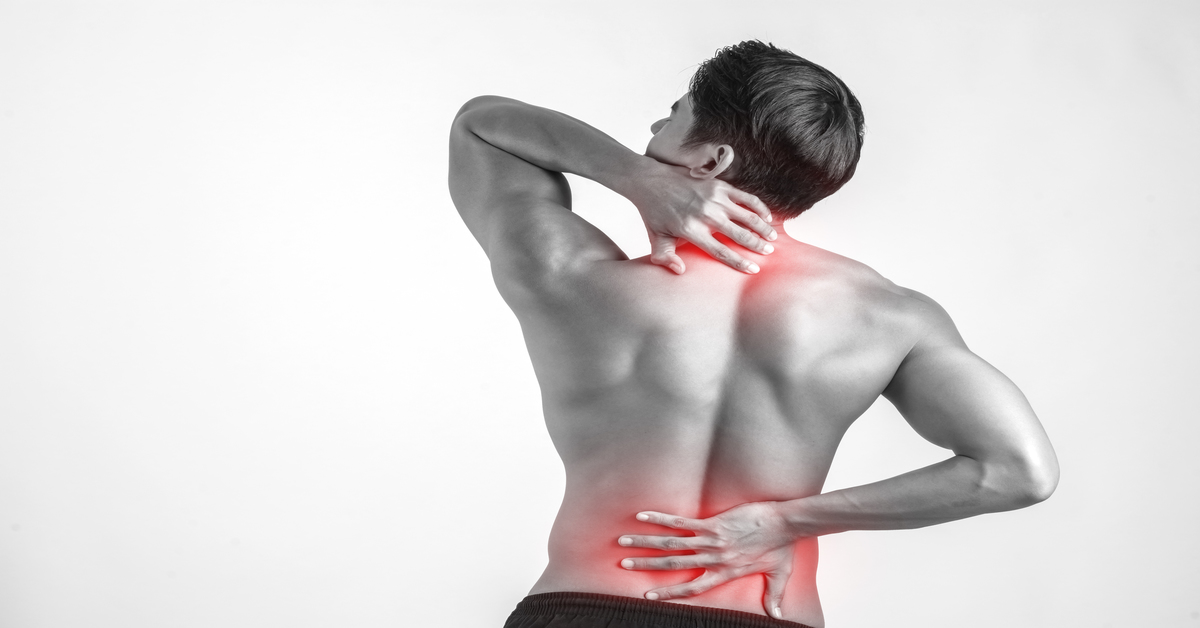Know about Sciatica and its Treatment
4 min read
Close up of man rubbing his painful back isolated on white background.
Sciatica is a severe form of lower back pain. Sciatica is caused by the inflammation of the sciatic nerve, which originates in the lower back/gluteal area. Inflammation can lead to pinching or compression of the sciatic nerve and cause pain.
Sciatica is generally caused by a herniated (or slipped) disk that presses on the root of the sciatic nerve. The condition may be self-healing for some people, whereas others need surgical intervention. Consulting a physio doctor for sciatic nerve pain relief treatment is helpful.
Getting caught in a cough, sitting, or sneezing will worsen sciatica pain. Also, the leg can feel tingly, numb, or weak from the effect of sciatica. Acute sciatica symptoms can last for weeks.
The Sciatic Nerve and Inflammation Aspects
The sciatic nerve is the thickest (approximately as thick as the index finger) and the longest-running nerve in the body. It comprises five nerve roots: two of these nerve roots originate from the lumbar spine (lower back). Remaining three from the sacrum (the final section of the spinal column, above the tailbone). These five roots combine and branch out into a right and left sciatic nerve.
Each sciatic nerve runs through parallel side of the hips, through the buttocks and down the legs, and ends just below the knees. In this region, the sciatic nerve splits into small nerves that run down to the feet and toes..
Common Causes of Sciatica
The following spinal conditions may cause sciatica:
- Lumbar herniated disc: It is scientifically proven that a herniated lumbar disc compresses one or more spinal (sciatic) nerve roots between L4 and S3 vertebrae. The herniated lumbar spine may cause sciatica in one or both sides of the hip causing symptoms in one or both sides, the latter being relatively rare, called bilateral sciatica. There are two main ways in which the herniated discs cause sciatica:
- Direct compression happens when a lumbar disc bulges or leaks its soft inner material through the fibrous outer core and directly presses against the nerve.
- Chemical inflammation occurs due to release of the acidic hyaluronan to cause irritation and inflammation in the area around the sciatic nerve.
- Degeneration: Degenerating joints in the lumbar spine can cause inflammation of the synovial tissue or abnormal bone growths. Such abnormal growths cause compression of one or more nerve roots of the sciatic nerve. Degenerated spinal discs may also secrete proinflammatory substances, leading to sciatica.
- Lumbar spinal stenosis: Spinal stenosis causes narrowing of the spinal canal. People over the age of 60 are most likely to develop it.
- Spondylolisthesis: Spondylolisthesis is a stress-induced fracture that causes one vertebral body to slip forward on another. Hypothetically speaking, if the last lumbar vertebra slips over the first sacral vertebra, it may cause sciatica due to nerve compression. Spondylolisthesis is one of the causes of bilateral sciatica and affects younger adults more than older adults.
Signs and Symptoms of Sciatica
Along the large sciatic nerve’s course, sciatica manifests as pain and fatigue. One or more of the following features characterize sciatica:
- Pain starts from the buttocks or the lower back. Extends to the entire leg and even the feet.
- Numbness caused along with excruciating pain in the legs
- One-sided symptoms in cases of unilateral (single-legged) sciatica where one leg feels heavier than the other and makes it difficult to move
- Posture issues arising due to pain in the lower back causing difficulty in bending, twisting the spine, lying down, walking, and other basic daily movements of the body.
Treatment of Sciatica
- Medication: A range of over-the-counter drugs such as ibuprofen and aspirin (non-steroidal anti-inflammatory drugs) may provide temporary, symptomatic relief from pain. Acetaminophen and corticosteroids is for the inflammatory response is higher. Even more severe cases may require epidural injections and opioids to reduce inflammation locally around the sciatic nerve roots.
- Physiotherapy: Massaging the inflamed and affected areas, applying hot packs, and compressing the affected areas may also relieve some pain by improving blood circulation. Physical exercise releases endorphins that work wonders in reducing pain as well.
Surgical procedures: Microdiscectomy and laminectomy are two common surgical procedures to treat sciatica. However, these surgeries are only prescribed by specialists after every other form of Sciatica Pain Treatment has been unsuccessful in relieving symptoms. It is important to remember that surgery can only reduce the pressure on the nerve roots. - Sciatica Rehab: Following spinal surgery, there are often activity restrictions. The purpose of physical therapy is to prevent injury and strengthen the back. Ultimately, one hopes to return to their usual activities.
- Almost all individuals who undergo surgery report relief of symptoms. In the long run, there is still a chance for the pain to return one in every 20 times.
Conclusion:
Pressure on the sciatic nerve roots causes Sciatica. Which cause pain around the lower back, thighs and legs. Some cases may heal on their own, but in case it causes severe symptoms, please consult your physiotherapist or a neuro-specialist for expert opinion and treatment.





